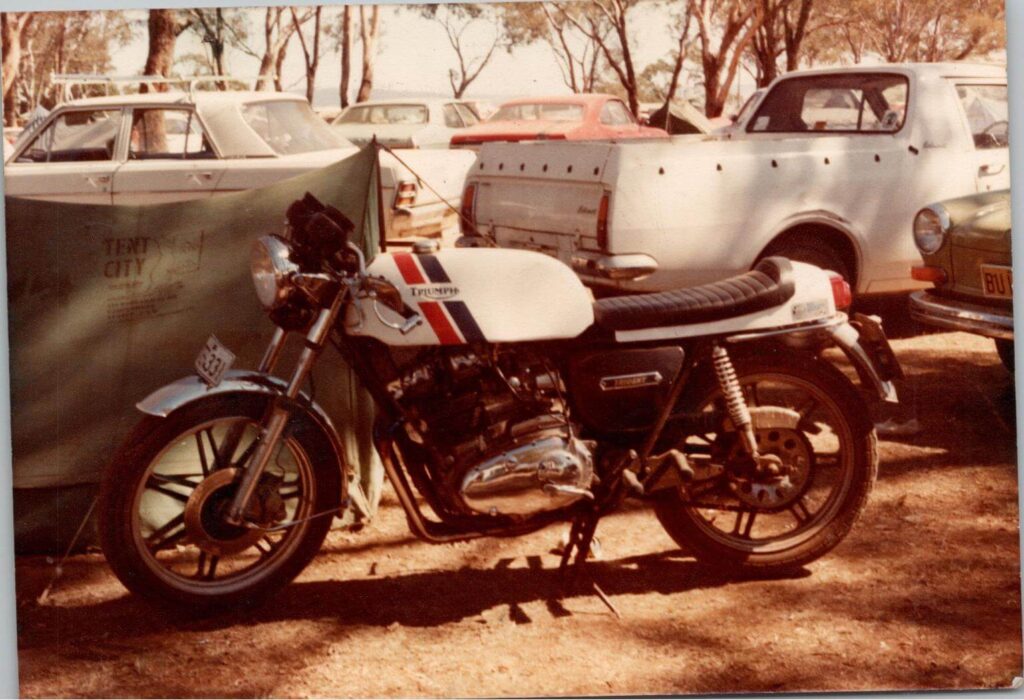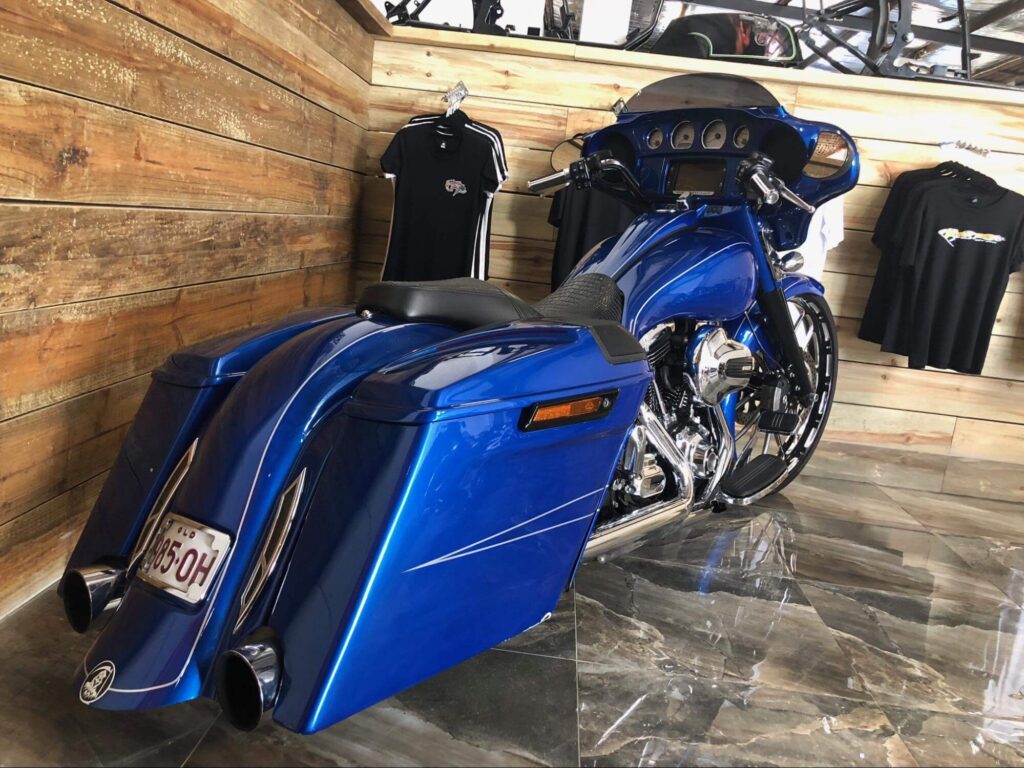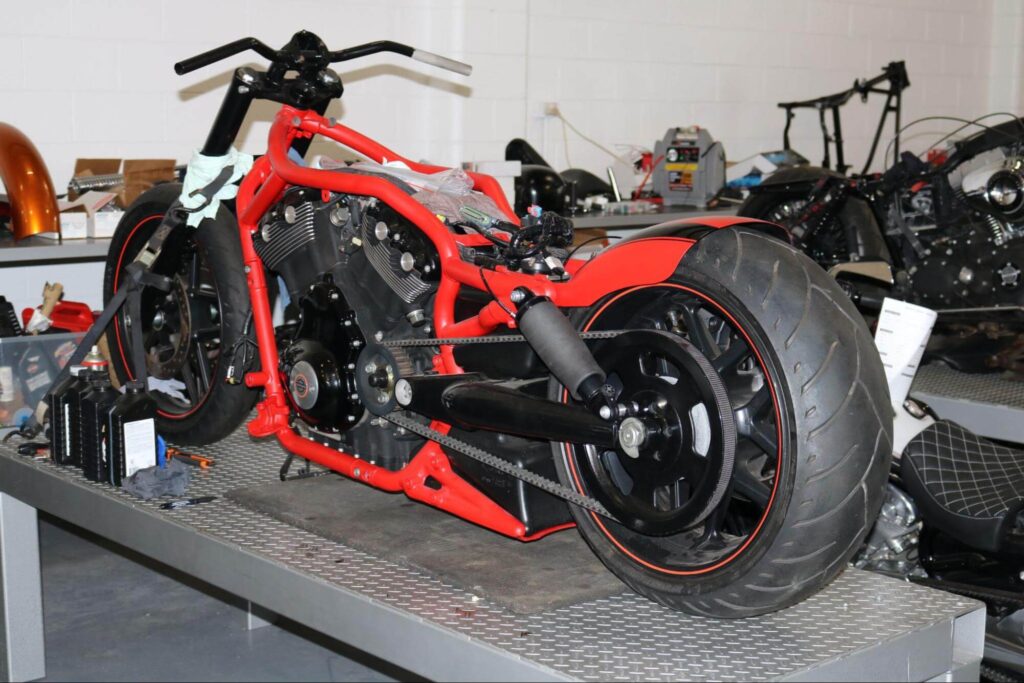The world of motorcycling is going through a technological revolution. These innovations in the industry are transforming motorcycles from the riding experience to improving safety standards.
Modern motorcycle technology has come a long way compared to decades ago. The latest technology has brought about cutting-edge safety features, the rise of electric motorcycles, and smart technology that improves the ride experience.
Imagine the disbelief when telling someone thirty years ago that phones with touchscreens would exist and that they could also connect with motorcycles. Smartphones have brought a wave of quality-of-life improvements to motorcycles.
The evolution of modern motorcycle technology has also had a massive impact on improving sustainable practices in the industry. This includes greener manufacturing processes and eco-friendly riding options for a greener future.
In this article, we’ll be exploring the history of motorcycle technology, how far it has come, and recent advancements. We’ll also be discussing how you can use these improvements, like new motorcycle safety tech, to enhance your ride.
Motorcycle Technology: From Then Till Now

Over the last century, motorcycle technology has undergone incredible evolutions. This has led to innovations in the way motorbikes are made, motorcycle restoration, and the way we ride.
We’ve pieced together a brief timeline covering the major ways motorcycles have advanced over the years, and it all starts back in 1867. The first motorcycles trace their roots back to when a steam engine was fitted on a bicycle by Ernest Michaux.
Within the same decade, a few other inventors, like the French engineer Louis-Guillaume Perreaux, patented and created a single-cylinder machine using a steam engine to power a penny-farthing bicycle.
The first commercial motorcycles wouldn’t be until nearly two decades later, in the 1880s. Manufacturers began fitting their bikes with internal combustion engines, which surged in an uptick of production when World War 1 started.
Post-war, motorbike manufacturing blew up—leading to advancements in riding technology and a focus on competitive motorcycles, too. After the 2nd World War, motorcycles had gained a global market. Here are some of the major advancements through the years:
- Originally, when motorbikes broke into the commercial market brakes were only available for the back wheel. Front-wheel braking was first made available in 1928 by Harley Davidson.
- Standardised controls for motorcycles were only introduced in the past 60 years. These regulations were introduced in 1972. Before then, manufacturers could put controls, like the brake and turn signals, wherever they wanted.
- Fuel injection systems, courtesy of the Environmental Protection Agency, were only recently introduced in the 80s.
Understanding the origins of the motorcycle can help us become more appreciative of the technological advancements made in recent years. These advancements have also made it easier to repair and restore motorcycles as diagnostic tools have become more sophisticated.
The future of motorcycle technology is looking bright as well. Manufacturers are investing in ways to make riding more stable, safe, and fuel-efficient. Here are future tech to look out for:
- Hybrid and electric bikes
- Hubless wheels
- Increased mobile phone integration and smart connectivity
How Motorcycle Technology is Improving The Riding Experience

Modern motorcycle technology is improving the riding experience in every aspect, from safety to connectivity and more control over the vehicle. Motorcycles are becoming increasingly more sophisticated, and here’s why:
Technical Riding Gear
Riding gear is quickly evolving alongside motorcycles, bringing in a range of quality-of-life and safety features through tech integration. For example, modern helmets now have built-in GPS systems and cameras for increased view.
It’s even possible to get gear now that comes with built-in air conditioning, perfect for riding in hot climates. Wearable airbags also exist through vests, protecting you in the case of a fall or collision.
Connectivity
Smartphone connectivity and tech integration aren’t only changing cars and homes, but also the way we ride motorcycles. There are motorcycles now with full-colour touchscreen dashboards, putting navigation, music, and even trip data at your fingertips.
Traction Control
Similarly to automotive technology, motorcycles are becoming more sophisticated with traction control and quick-shifting technology. This gives more power to the rider, allowing them more control over the bike but with faster acceleration, quicker gear changes, and preventing wheel slippage.
Electric Motorcycles
Just like electric cars, hybrid and electric motorcycles are the greener future for the industry. Whilst gas-powered motorcycles have dominated the industry for decades, more manufacturers are investing resources in electric alternatives.
How Motorcycle Technology is Improving Safety Standards

Advancements in technology are ensuring that motorbikes are safer and smarter than ever before. From the vehicle itself to protective gear, here are all the different ways modern motorcycle technology is raising safety standards
ABS
ABS stands for anti-lock braking system, which helps the rider maintain steering control in emergencies by stopping the vehicle’s wheels from locking and skidding.
Although the technology was available for motorcycles in the late 1980s and 1990s, it wasn’t until recently that it was tailored for them. It took decades for ABS to be specifically designed for motorcycles in 2010.
Now, the anti-lock braking system has become a safety standard in Australia. In 2019, it was made mandatory that all new motorcycles sold have ABS, and in 2021, old generations of motorcycles will have to be fitted with the system.
Airbags
While airbags have always been a common safety feature in cars, they are only a recent development for motorcycles. A few motorcycle models come with airbags as a standard feature, but they can also be added as an after-market modification.
Dynamic Headlights
Every rider knows that low visibility, especially on twisting or bending roads, can be extremely dangerous. This is because the lights on traditional bikes shine straight ahead, even when they’re turning on a bend or curve.
Now, it’s possible to get motorbikes fitted with headlights that dynamically adapt when riding. They can turn in the direction you’re riding, providing better visibility and alerting traffic coming towards you.
Slipper Clutch
As time passes, new and innovative technology gets cheaper and more accessible. This statement also applies to motorbikes and the slipper clutch. The system was once only found in high-performance bikes and motorsports, but now it’s made its way to everyday road bikes.
The slipper clutch, sometimes also known as a back-torque limiter, is a specialised clutch that comes into use like an ABS. If you ever need to brake suddenly, the slipper clutch will kick in to control the rear wheel of the bike, making rapid deceleration and downshifting safer.
Protective Gear
The technology and design of protective gear are improving every year. For example, when Australia made helmets mandatory back in 1973, the only feature and purpose they had was protecting your head from injury.
Now, there are many helmets on the market that include high-tech safety features. For example, helmets with advanced mirror systems, sun/glare protection, and 360-degree cameras allow for better viewing.
Airbag vests are a relatively new life-saving invention. These vests are lined with airbags that deploy in the event of a collision or fall, reducing the potential injury caused by a crash.
Level Up Your Motorcycle With Taverner Motorsports

Our team at Taverner Motorsports can do custom upgrades for all makes and models of bikes, and we also have experienced technicians for Harley Davidson motorcycles.
Along with fitting some of the latest safety technology, Taverner Motorsports also offers a range of custom upgrade services. These include cosmetic upgrades, like custom paint, to performance upgrades on the engine and exhaust systems.
Reach out to our team today with your ideas to enhance your motorcycle, and we’ll get back to you with a quote.
